About the Woodworking Industry Development Cluster
The Woodworking Industry Development Cluster is an association of the main Estonian wood industry enterprises and the two largest Estonian universities. The aim of the cluster is to develop the Estonian wood industry by promoting it abroad and developing international communication. The mission of the cluster is to increase the cooperation between wood industry enterprises, companies of other related sectors, and research institutions to a new level.
The leading partner of the cluster is the Estonian Forest and Wood Industries Association (EFWIA). Another 15 partners belong to the cluster. Thirteen of them are business partners and two are research partners.
The cluster was awarded with the European Cluster Management Excellence label in BRONZE.
The objective of the cluster is to strengthen the international competitiveness of the Estonian wood industry and the organisations participating in the cluster through:
- new market opportunities in foreign markets arising from joint marketing and branding;
- improved knowledge and skills and increases in productivity;
- products of higher added value, more complex services, and an ever-expanding product range.
The activities of the Woodworking Industry Development Cluster are supported by the European Regional Development Fund through the Cluster Development Programme of Enterprise Estonia. More information is available at http://www.eas.ee/teenus/klastrite-toetamine/. Total cost of the project is 336 000 EUR, of which the contribution of the European Regional Development Fund is 168 000 EUR.
The leading partner of the cluster, the Estonian Forest and Wood Industries Association (EFWIA), is a non-profit association founded in 1996 to bring together enterprises predominantly linked to the forest and wood industry.
The EFWIA connects enterprises and organisations engaged in logging as well as in the chemical and mechanical processing and marketing of timber. The association has 64 members, including four educational institutions that provide education in the respective domain. The management board of the EFWIA has 15 members. The chairman of the board is Marek Kase. The executive director of the association is Henrik Välja.
The Estonian Forest and Wood Industries Association works daily to:
Represent the interests of the members and distribute any necessary information among the members.
About Estonia
Estonia is a Northern European country. Its territory covers 45,227 km2 and the largest city is the capital Tallinn. The Republic of Estonia is a parliamentary democracy. With a population of 1.29 million, Estonia is among the smallest EU countries. On 1 May 2004, Estonia acceded to the European Union. Estonia is also a member of the OSCE, WTO, NATO, OECD, Schengen area and Eurozone, and has signed the Kyoto Protocol, an international treaty aimed at globally reducing greenhouse gas emissions.
Estonia timber products are well known in world markets – members of the association have established sales arrangements on all continents. Although Estonia is a small country, we have a long coastline and numerous ports that can be used to ship goods to any place in the world. Estonia has some of the most northern ports that are kept ice-free year-round.
Estonia has a transparent legislation system and a liberal economic policy. Economic freedom, great ratings in therms of the ease of doing business in the country, per capita investment, record-low national debt, membership of the Eurozone, and low corruption index – are all factors that show that there is something about Estonia that is worth taking a closer look at. The Estonian working culture sets high standards for both products and the people behind the products, which naturally yields high quality products and top class services. Estonia’s remarkable economic freedom endows Estonian companies with a competitive edge on the global market, as they can offer very good quality/price ratio and an individual approach to each client.
About Estonian forests and timber
Estonian national forests are all 100% FSC (1,4 mil ha) and PEFC (1,2 mil ha) certified. In total, about 60-70% of Estonian forests are certified. In private forests, certification process is still undergoing and the total area of certified private forests grows each year. Both FSC and PEFC standards are used for the certification of the products of Estonian wood industry companies. The regulations governing forestry and timber trading in Estonia maintain very high requirements with regard to the verifiability of the origin of wood and timber and the sustainability of Estonian forest management.
The Estonian forest and wood industries are characterised by two important keywords:
- long-standing tradition: timber products have historically been a very important export for Estonia and the wood industry has been the engine driving the Estonian economy. Estonian timber companies export a wide range of different product groups, among which the most prominent include sawn and planed timber, pre-fabricated structural details for homes and for furniture manufacturers, and modular buildings. The selection of exported products has improved over the last decade, and involves more and more products with higher added value. The strengths of the Estonian manufacturers include solutions tailor-made for particular customers, flexible sales and marketing arrangements.
- innovative and rapid development during the past 25 years. The so-called greenfield investments have played an important role in the development of the Estonian wood industry during the last decades, allowing it to become a high-tech industry which responds very well to the market’s needs with regard to the quality of products and security of supply.

Growing stock per forest land area in 2015, m3 / ha (Source: Woodbook 2016)

Growing stock per capita in 2015, m3 / pp (Source: Woodbook 2016)


